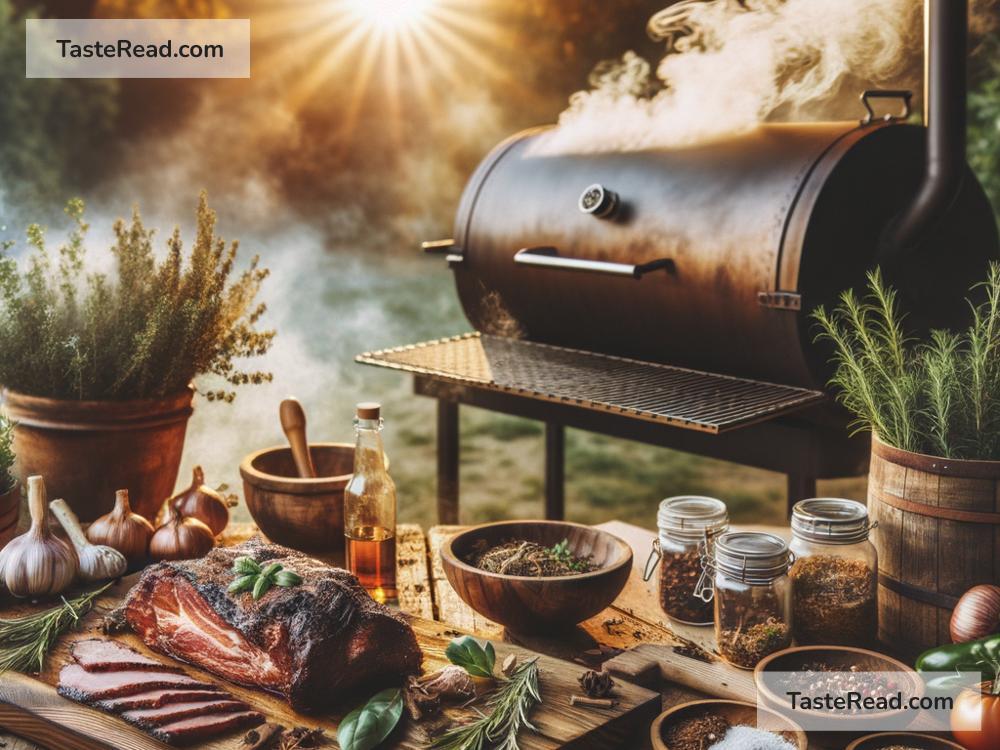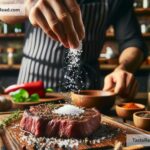The Science of Cooking with Smoke: Techniques and Tips
Cooking with smoke is one of the oldest methods of cooking and preserving food. For centuries, humans have used smoke to add flavor to meat, fish, and even vegetables. Today, smoking food remains a popular technique for barbecue lovers and home cooks alike. But the process is more than just lighting a fire and waiting for food to cook. There’s science behind smoky flavors and techniques that can make your dishes stand out. In this blog, we’ll explore the science of cooking with smoke and provide simple tips to help you master this flavorful method.
How Does Smoking Work?
Smoking is a slow cooking process that uses indirect heat and smoky air to cook and flavor food. When wood burns, it releases gases, water vapor, and compounds that attach to the surface of food. These compounds give smoked dishes their unique taste and aroma.
There are two main types of smoking: hot smoking and cold smoking. Hot smoking cooks food at temperatures of 200-300°F (93-149°C), while cold smoking uses temperatures below 100°F (38°C) and typically requires pre-cooked or cured food since it doesn’t “cook” the food.
The Role of Smoke in Flavor
The flavor of smoked food comes from the chemicals in the wood as it burns. Different types of wood produce different flavors. For example:
- Hickory: A bold, nutty flavor, perfect for pork and ribs.
- Applewood: Sweet and mild, great for chicken and fish.
- Oak: Strong and earthy, suitable for beef and lamb.
- Cherry: Fruity and slightly sweet, ideal for poultry.
- Mesquite: Intense and smoky, commonly used for red meats.
The type of wood you use plays a big role in the final taste of your dish. Always choose untreated wood to avoid chemicals or toxins.
The Science of Smoke Absorption
When food absorbs smoke, it forms a thin layer called the “pellicle.” This layer traps smoke particles, allowing the flavors to sink in. The process works better on foods with high moisture content, like meat or fish. Water molecules help carry smoky compounds into the food, ensuring more even absorption.
Salt and fats also interact with smoke. Salt can enhance the smoky flavor, while fats help dissolve some compounds from smoke, adding richness to the taste. That’s why fatty meats like pork belly or salmon are common choices for smoking.
Key Elements of Smoking
To smoke food effectively, you need three main elements:
-
Heat Source: Charcoal or wood is the most common, but electric or gas smokers can also be effective. The heat source creates the necessary temperature to cook the food and generate smoke.
-
Wood: As mentioned earlier, the type of wood affects the flavor of your food. Experimenting with different woods can help you find the perfect match.
-
Time and Temperature: Smoking is typically a slow and low process. Cooking food at lower temperatures for a longer time allows smoke to fully infuse the dish while keeping it juicy and tender.
Tips for Smoking Like a Pro
Whether using a smoker, a grill, or even your oven, here are some simple tips to help you get the best results:
1. Use a Good Smoker or Grill
A quality smoker, like an offset or electric smoker, makes it easier to control temperature and airflow. If you’re using a grill, set it up for indirect heat. Place your food on one side and your heat source on the other.
2. Control the Temperature
A thermometer is your best friend when smoking. Keeping the temperature consistent ensures your food cooks evenly. Most smoking takes place at a steady 225°F (107°C).
3. Don’t Oversmoke
Too much smoke can make your food bitter. Aim for thin, blue smoke rather than thick, white smoke. White smoke usually means the wood isn’t burning properly.
4. Prep Your Meat
Before smoking meat, season or marinate it to enhance flavor. You can also brine cuts like chicken or fish to make them extra juicy. A dry rub with spices is another popular method.
5. Pick the Right Wood
Choose a wood type that complements your food. For example, sweet woods like apple or cherry pair well with chicken, while stronger woods like hickory or oak suit beef and pork.
6. Patience is Key
Smoking takes time, and rushing can lead to uneven cooking or poor flavor. Trust the process and allow the smoke to work its magic.
Creative Smoky Dishes to Try
Smoked food isn’t limited to meat. You can smoke cheese, vegetables, or even desserts like smoked chocolate. Be creative! Here are some ideas to inspire you:
- Smoked brisket with a flavorful dry rub.
- Smoked salmon with a honey glaze.
- Smoked portobello mushrooms for a vegetarian twist.
- Smoked sweet potatoes or corn on the cob for a smoky side dish.
- Smoked apples or peaches for a unique dessert.
Final Thoughts
Cooking with smoke is a blend of art and science that transforms simple ingredients into flavorful masterpieces. By understanding how smoke works and experimenting with different techniques, you can create dishes full of depth, complexity, and irresistible smoky aromas. Whether you’re grilling in your backyard or using a smoker, the possibilities are endless. So light up the fire, let the smoke roll, and start creating smoky magic in your kitchen!


